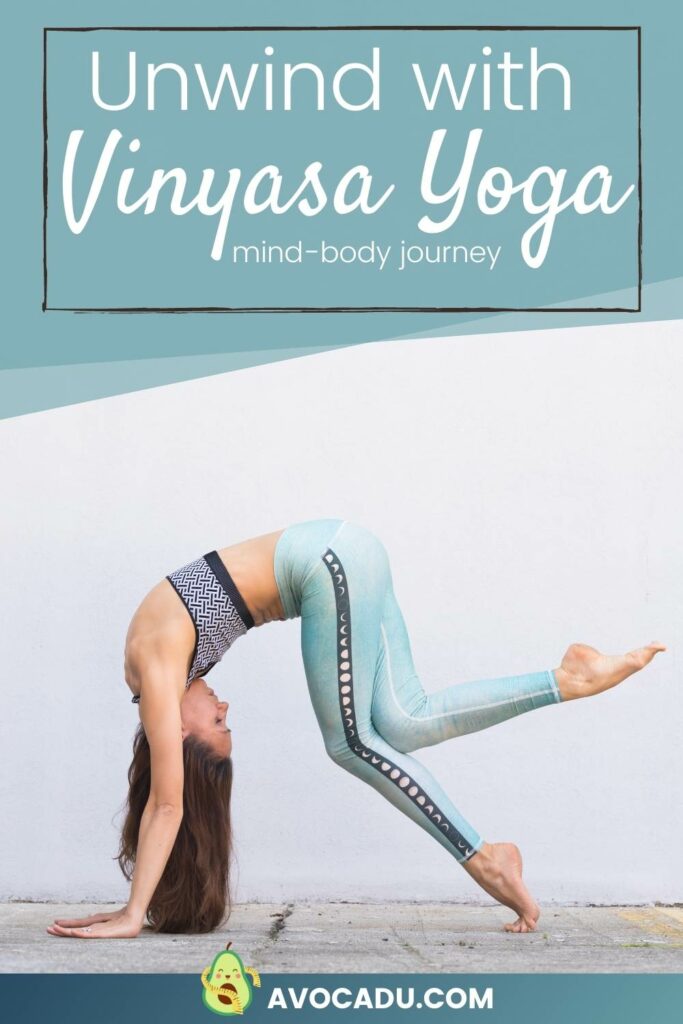Vinyasa Yoga: Finding Your Flow for a Healthy Life
If you’ve been considering a new approach to wellness, Vinyasa Yoga might just be your answer.
Vinyasa Yoga, originating from the ancient traditions of India, offers a unique fusion of movement and breath.
Let’s explore how you can find your flow with Vinyasa Yoga and weave it into a lifestyle that promotes health and well-being.
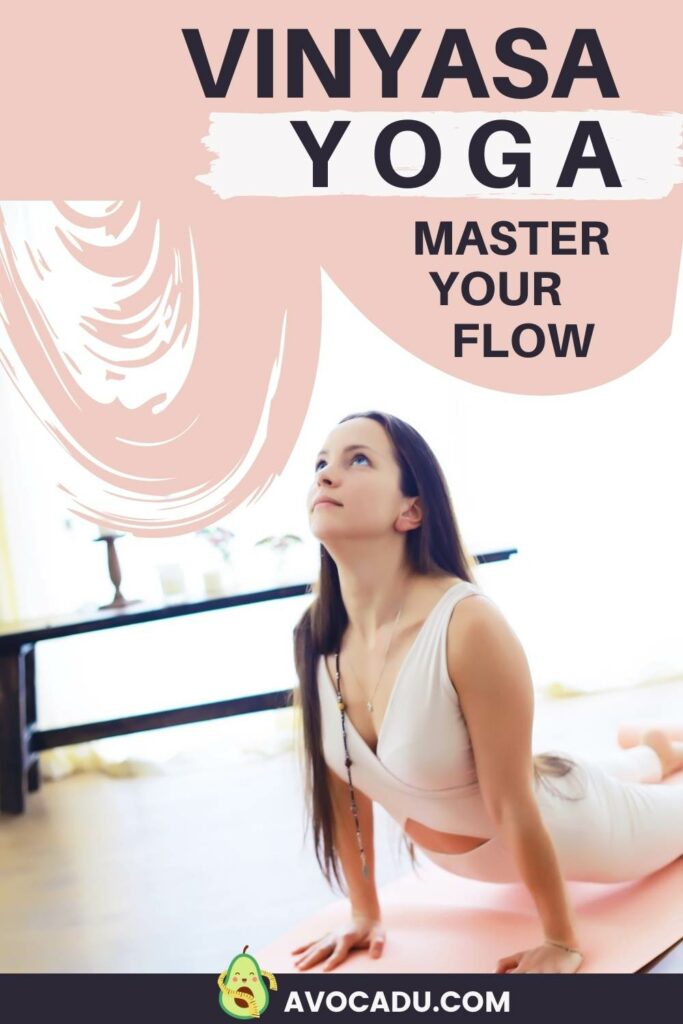
Related Article: Exploring Different Styles of Yoga: Which One Suits You Best?
This post may contain affiliate links, which helps keep this content free. Please read our disclosure for more info.
Understanding Vinyasa Yoga
In the vast world of Yoga, Vinyasa stands out for its dynamic, flowing approach. At its heart, Vinyasa is about syncing movement with breath – a dance-like rhythm that becomes a moving meditation.
What Makes Vinyasa Yoga Special?
Vinyasa Yoga stands out for its unique blend of dynamic movement, individual flexibility, and creativity.
If you’re seeking a yoga practice that keeps you engaged, challenges you differently each time, and enables personal expression, Vinyasa Yoga might just be the perfect fit for you.
Fluid Transitions
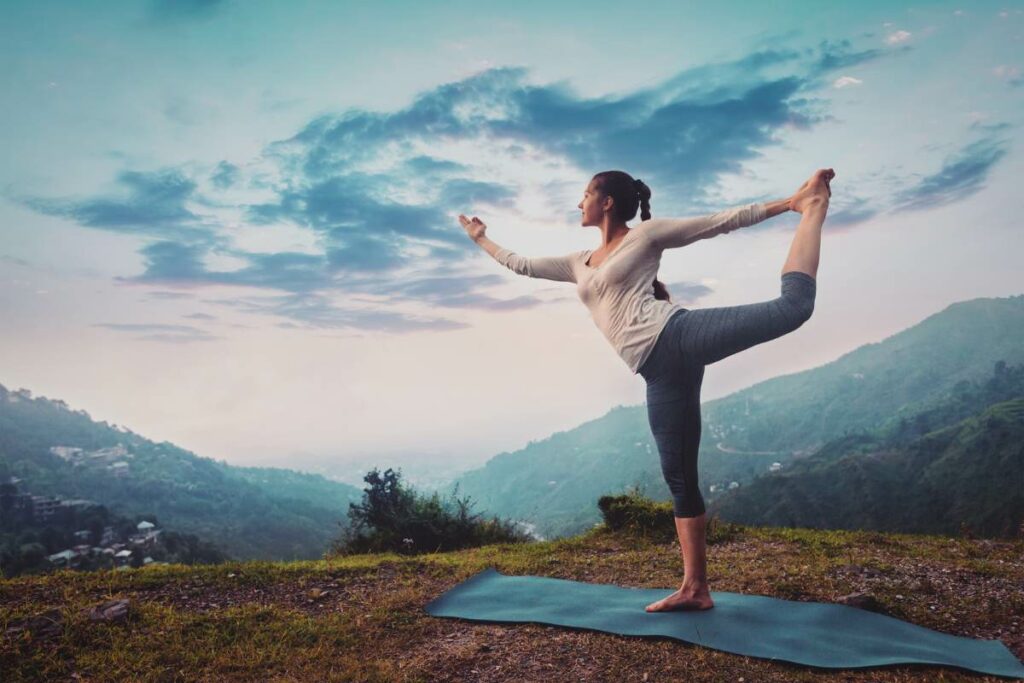
One of the defining characteristics of Vinyasa Yoga is its fluid transitions. Instead of holding static poses, as in some yoga styles, Vinyasa focuses on the journey between poses.
Each posture seamlessly flows into the next, creating a graceful, dance-like sequence. This continuous flow is guided by your breath.
Inhales often correspond with expansive movements, such as reaching arms overhead, while exhales accompany contracting movements, such as folding forward.
This synchrony of breath and movement helps create a deeply immersive and mindful yoga experience.
Variety

The term “vinyasa” can be translated from Sanskrit as “to place in a special way,” reflecting the flexibility and variety inherent in this yoga style.
There’s no set sequence in Vinyasa Yoga, meaning no two classes are the same. This allows you to explore different sequences and poses in each class.
One day you might focus on balance poses, the next on strength-building sequences, and another day on heart-opening backbends.
This diversity not only keeps your practice exciting but also helps you develop a well-rounded physical fitness and allows you to continually challenge yourself in new ways.
Creativity
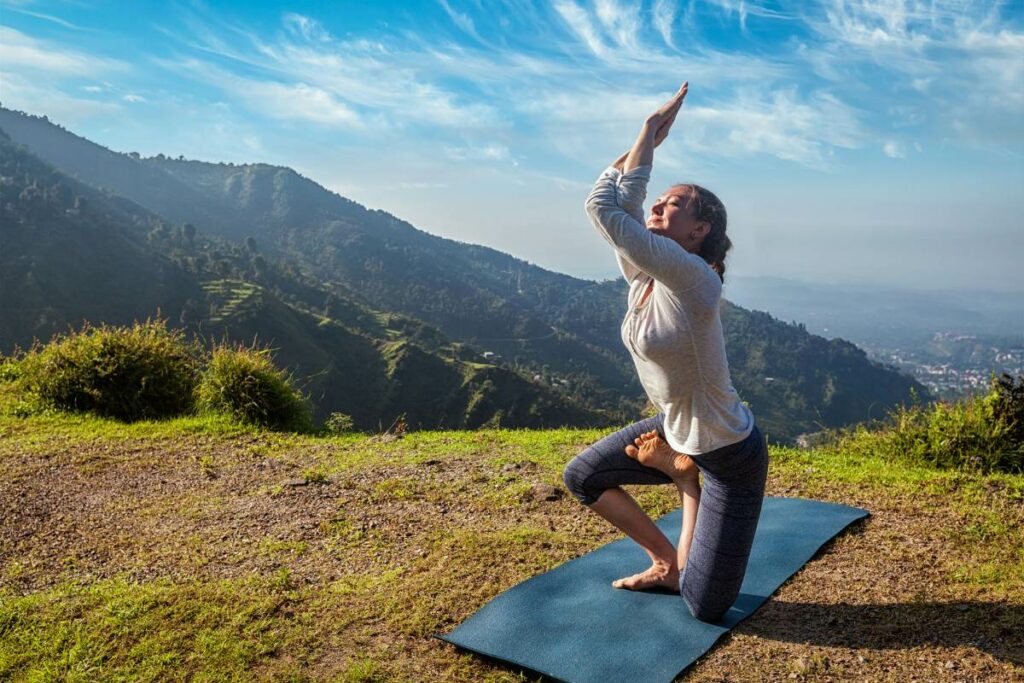
Vinyasa Yoga invites a high level of creativity from instructors. Each instructor brings their unique spin to classes, devising sequences that reflect their personal style and philosophy.
This could be influenced by their training, their own practice, or even the energy of the class on a particular day.
The result is a dynamic and engaging class that keeps your practice fresh and exciting. This variety and novelty stimulate both the body and the mind, fostering a sense of curiosity and exploration in your practice.
It’s a reminder that yoga is not just a routine workout but a practice of self-discovery and personal growth.
The Health Benefits of Vinyasa Yoga
Vinyasa Yoga is more than a fitness trend. It’s a holistic practice that can boost your health in numerous ways.
Physical Health Benefits
Though yoga is a holistic discipline, encompassing mind, body, and spirit, it’s also a potent tool for physical health.
Vinyasa Yoga, with its dynamic flow of postures, offers a plethora of physical benefits that can contribute to your overall well-being and fitness.
Let’s explore how this dynamic practice enhances strength, flexibility, and cardiovascular health.
Strength
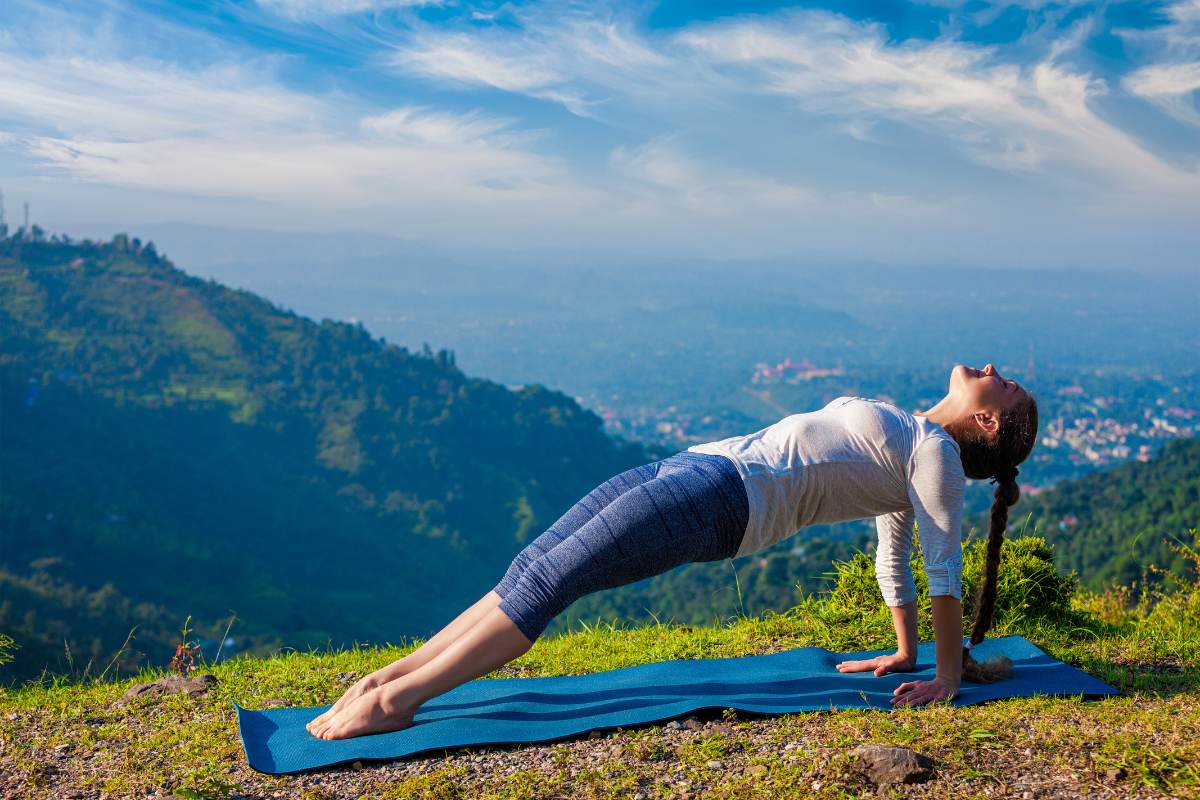
Vinyasa Yoga is an excellent way to build functional strength. The poses in Vinyasa Yoga sequences engage multiple muscle groups, providing a full-body workout.
For example, a common pose like Chaturanga Dandasana (Four-Limbed Staff Pose) strengthens your arms, shoulders, and core.
Standing poses like Virabhadrasana (Warrior Pose) work your legs and glutes.
Over time, as you flow through these sequences, you build overall body strength. More importantly, this strength extends beyond muscle development, contributing to better posture, balance, and injury prevention.
Flexibility
Flexibility is another key benefit of Vinyasa Yoga. The dynamic nature of the practice, where you fluidly move from one pose to another, helps increase both joint and muscle flexibility.
As you flow through a sequence, you’re continually stretching and lengthening different parts of your body.
Forward folds increase hamstring flexibility, while poses like Anjaneyasana (Crescent Moon Pose) stretch the hip flexors.
Consistent practice can lead to increased range of motion and decreased muscle tension, aiding in injury prevention and overall physical comfort.
Cardiovascular Health
Often underrated in yoga discussions, cardiovascular health is a significant benefit of Vinyasa Yoga.
The continuous movement in Vinyasa classes – transitioning smoothly from one pose to another with each inhale and exhale – provides a good cardiovascular workout.
This steady, rhythmic movement increases your heart rate, much like a brisk walk or slow jog might.
Regularly elevating your heart rate in this way can improve cardiovascular endurance and health, boosting your energy levels and contributing to overall fitness.
It’s a wonderful way to combine the benefits of aerobic exercise with the mindfulness and flexibility training of yoga.
Mental Health Benefits
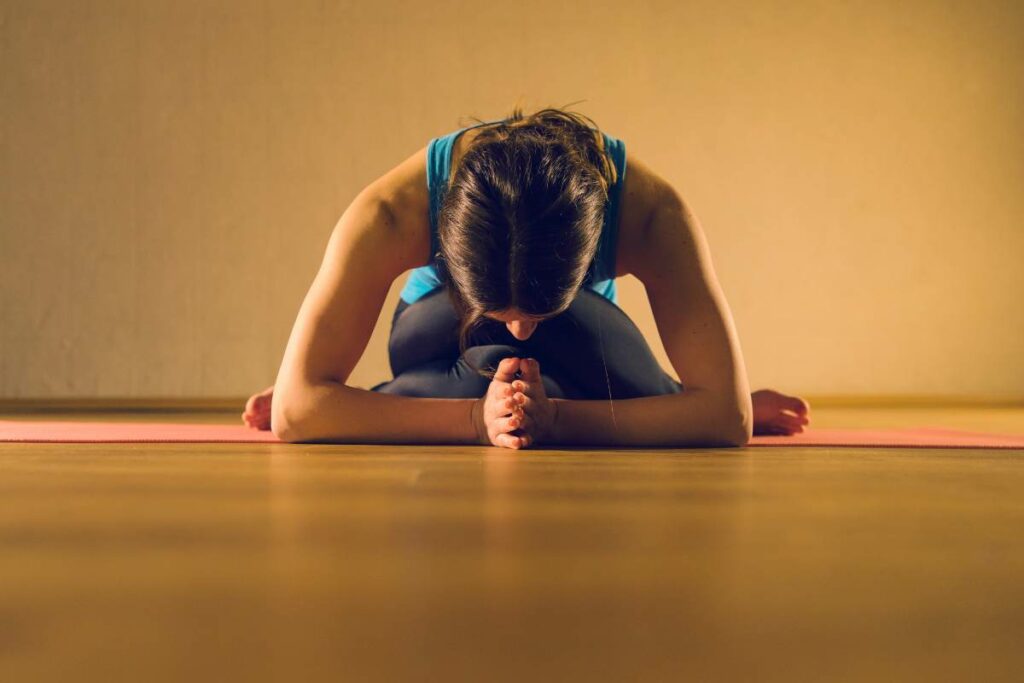
While the physical benefits of Vinyasa Yoga are significant, the practice offers equally powerful mental health benefits.
Yoga has been recognized for centuries as a path to mental clarity and peace, and modern science has begun to catch up, supporting these claims with robust research.
Let’s explore how Vinyasa Yoga aids in stress reduction, improving focus, and fostering mindfulness.
Stress Reduction
In today’s fast-paced world, stress has become a common challenge. Vinyasa Yoga offers an effective way to manage stress levels.
When you practice Vinyasa, you focus on flowing through postures and synchronizing your breath with your movements.
This concentration on breath and movement helps to quiet the mind, reducing the whirl of thoughts that can often amplify stress.
Not only that, but the physical exertion of the practice can help release tension stored in the body. Regular Vinyasa Yoga practice can be a valuable tool in your stress management toolkit, promoting relaxation and calm.
Improved Focus
Vinyasa Yoga requires concentration. As you flow through different postures, you need to focus on your breath, movement, alignment, and balance.
This concentration carries beyond the yoga mat, boosting mental focus and clarity in everyday life.
Over time, you may find yourself becoming more attentive and less prone to distractions, which can improve productivity and efficiency in your work and personal tasks.
By honing your ability to concentrate during your yoga practice, you are essentially training your mind, much like strength training for the body.
Mindfulness
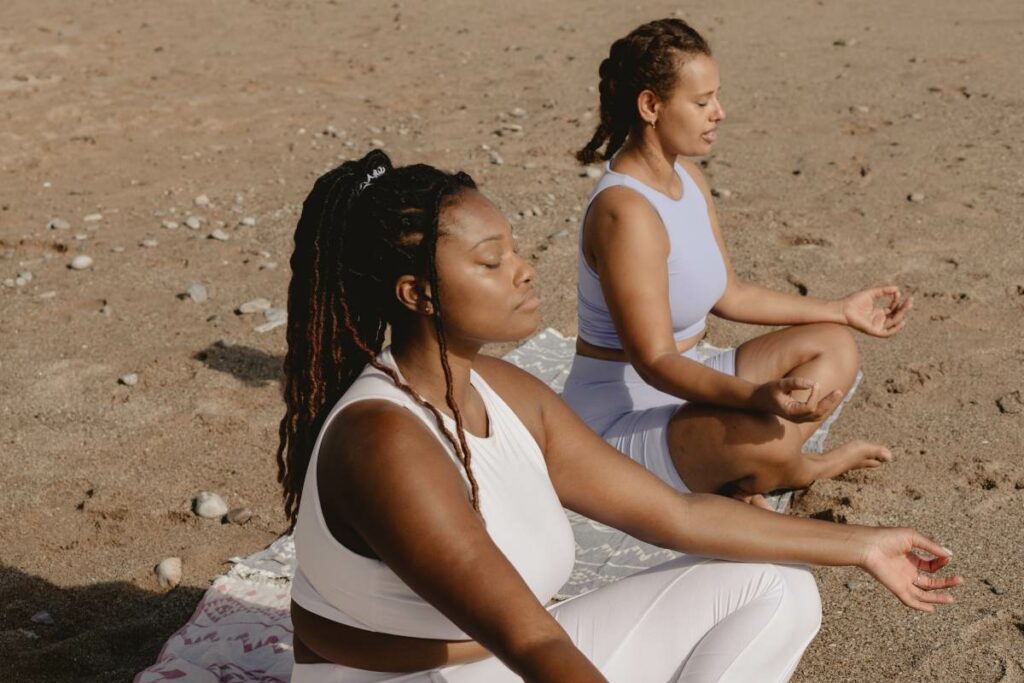
Perhaps one of the most profound benefits of Vinyasa Yoga is the sense of mindfulness it fosters.
By linking breath and movement, you cultivate an awareness of the present moment. Each breath anchors you to the here and now, helping you to let go of past regrets or future worries.
This mindfulness extends beyond the yoga mat, permeating your daily life. You may find yourself becoming more aware of your actions and reactions, allowing you to make more conscious choices.
This sense of mindfulness can enhance your relationship with yourself and others, leading to a more balanced and fulfilling life.
Finding Your Flow: The Essence of Vinyasa Yoga
To “find your flow” in Vinyasa Yoga means to unite your breath and movement into a seamless rhythm. It’s about creating a connection between the mind and body, leading to a meditative state.
The Role of Breath in Finding Your Flow
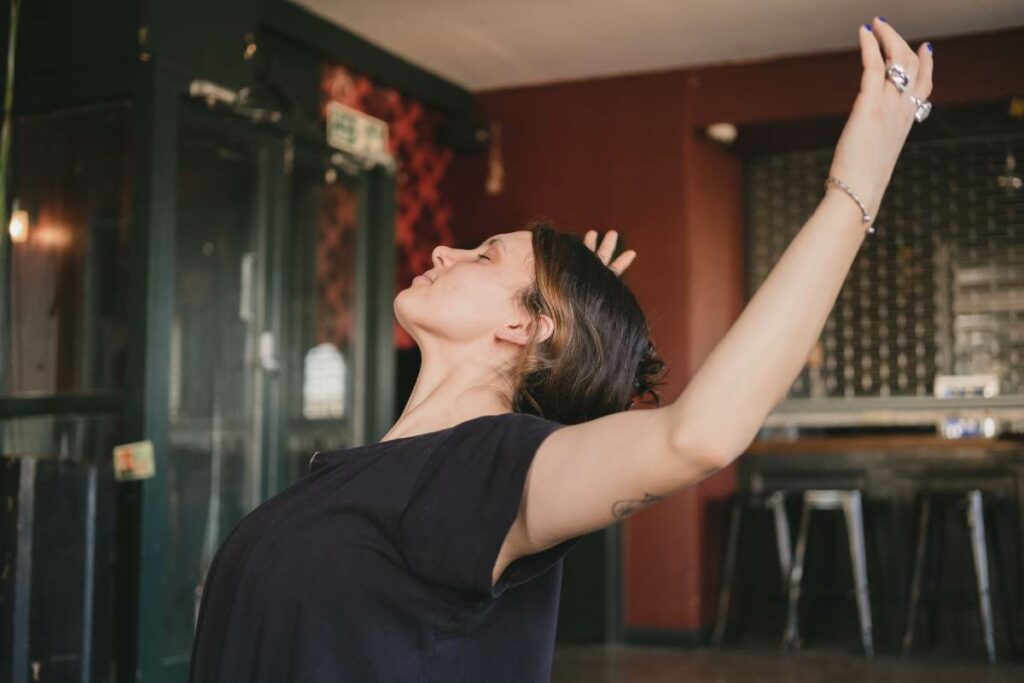
Breathing is more than a simple biological function; in the context of Vinyasa Yoga, it serves as the cornerstone, acting as a bridge between your mind and body.
The role of breath in Vinyasa Yoga extends beyond mere oxygen supply to your muscles; it becomes a guiding force that navigates your journey through each pose and sequence.
Breath as a Guide
In Vinyasa Yoga, breath does not merely accompany the movements – it guides them. Each posture is paired with either an inhale or exhale, creating a seamless, rhythmic flow from one pose to the next.
Expansive movements like lifting your arms or opening your chest are often paired with an inhale, while contractive movements like bending forward or twisting are paired with an exhale.
By tuning into this breath-guided rhythm, you ensure smooth transitions and steady pacing throughout your practice.
Breath as a Connector
With every inhale and exhale, you create a rhythmic connection between your body and mind. Breathing becomes an active part of your yoga practice, enabling you to move with intention and grace.
The constant attention to your breath keeps you anchored in your body, promoting a sense of embodiment. This focus on breath helps to quiet mental chatter and fosters a deep, internal awareness.
Breath as a Mindfulness Tool
Beyond guiding movement and fostering connection, the act of breathing consciously cultivates a sense of mindfulness.
Each breath you take in your practice anchors you to the present moment. Instead of worrying about the past or future, you’re focused on the rhythm of your breath here and now.
This concentration on the breath nurtures a meditative state, turning your Vinyasa Yoga practice into a form of moving meditation.
By embracing the role of breath in Vinyasa Yoga, you not only enrich your physical practice but also cultivate mental clarity and mindfulness, making each session a holistic experience of body-mind harmony.
Integrating Vinyasa Yoga into Your Lifestyle
Starting a Vinyasa Yoga practice doesn’t have to be daunting. With some simple steps, you can easily make it part of your daily routine.
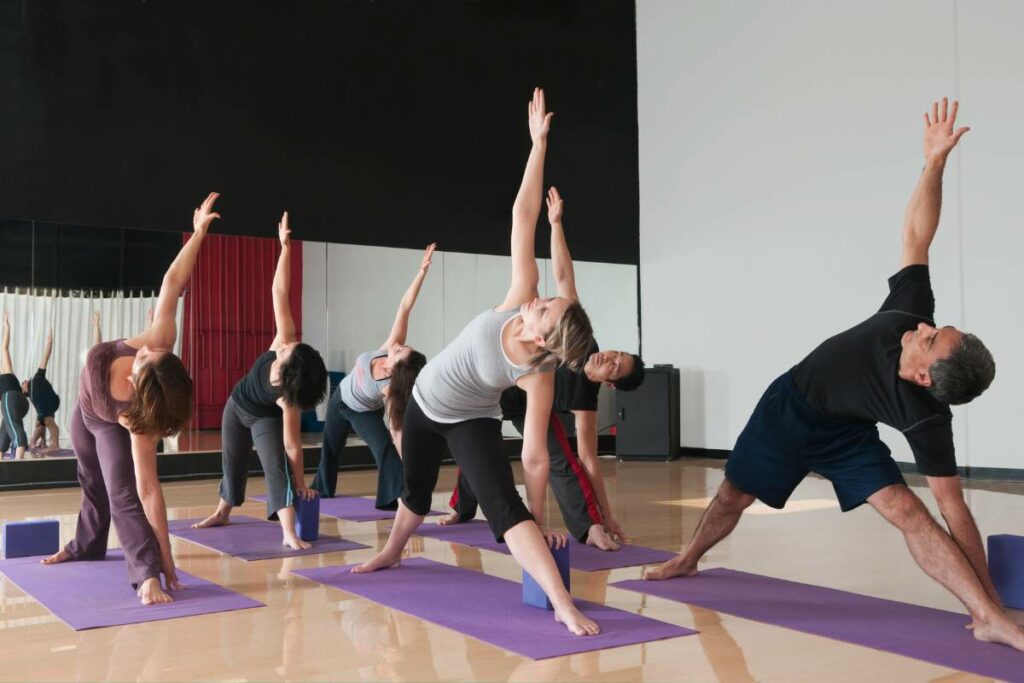
How to Get Started with Vinyasa Yoga
Taking up Vinyasa Yoga can be a transformative experience. Whether you’re new to yoga or experienced in other styles, beginning a Vinyasa practice offers an exciting opportunity to deepen your understanding of yoga and your own body.
Here are some key points to consider when starting your Vinyasa Yoga journey, including finding the right class, choosing an instructor, setting your expectations, and scheduling your practice.
Finding the Right Class
Finding the right Vinyasa Yoga class can make all the difference in your yoga journey. Look for beginner-friendly classes that are suitable for your current fitness level.
These classes often focus on basic postures and sequences, giving you the opportunity to familiarize yourself with the flow of Vinyasa.
As you gain more confidence and experience, you can venture into more advanced classes. Each person’s yoga journey is unique, so choose a class where you feel comfortable and challenged.
Choosing Your Instructor
A good instructor is crucial for a beneficial Vinyasa Yoga experience. They guide you through the poses, ensure your safety, and help you find your flow.
When choosing an instructor, consider their teaching style, experience, and qualifications. An effective teacher should give clear instructions, offer modifications for different skill levels, and create a supportive, non-judgmental environment.
It may take a few tries to find an instructor who resonates with you, but finding that connection can greatly enhance your yoga practice.
Setting Expectations
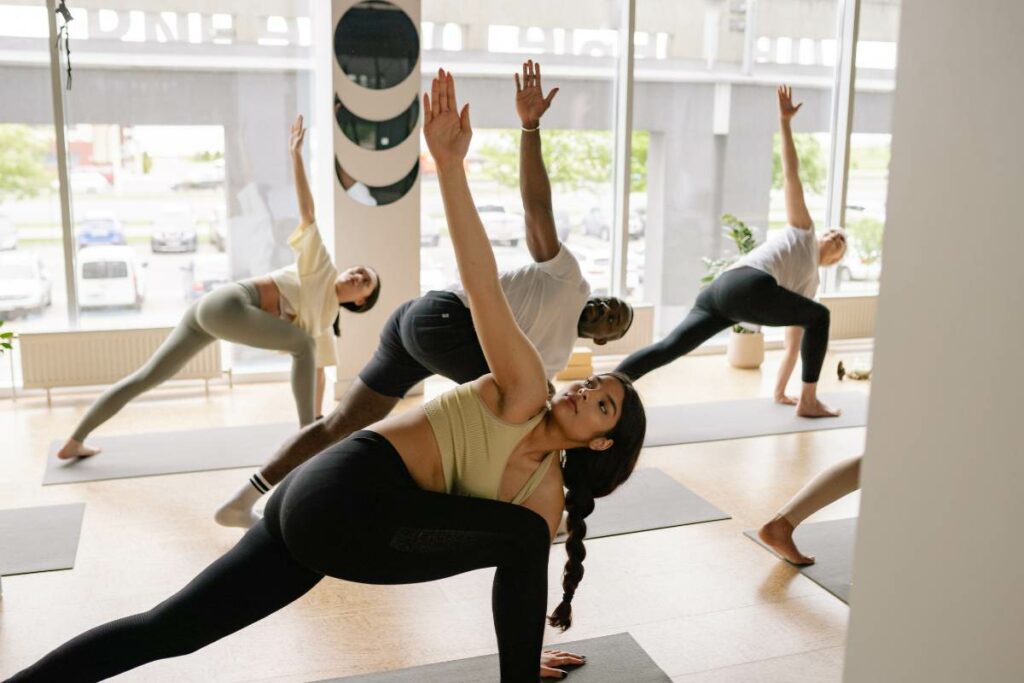
As you begin your Vinyasa Yoga journey, it’s important to set realistic expectations. Be patient with your progress.
Remember that yoga is not about performing complex poses perfectly; it’s about connecting with your body and mind.
In the beginning, you may find some poses challenging or transitions awkward. That’s perfectly normal.
With consistent practice, you’ll notice gradual improvements in your strength, flexibility, and fluidity. The most important thing is to enjoy your practice and listen to your body.
Scheduling Your Practice
To reap the benefits of Vinyasa Yoga, it’s important to make it a regular part of your routine. This could mean attending a morning class to start your day with energy, squeezing in a lunch break session to break up your workday, or practicing at home in the evening to unwind.
The ideal schedule depends on your personal preferences and lifestyle. Consistency is key. Even a short daily practice can lead to significant improvements over time.
With commitment and dedication, Vinyasa Yoga can become a cherished part of your life, promoting physical fitness and mental clarity.
Uniting Body and Mind: The Lasting Impact of Vinyasa Yoga

Vinyasa Yoga offers a unique blend of physical activity and mindfulness that can significantly enhance your health and quality of life.
Through its dynamic sequences, it provides a comprehensive workout, strengthening and stretching your body.
Simultaneously, it fosters mindfulness and concentration, helping to clear the mind and reduce stress.
With a Vinyasa practice, remember that the essence of finding your flow lies in synchronizing your movements and breath.
It’s about creating a moving meditation that connects you with the present moment, and above all, yourself.
Vinyasa Yoga is more than a physical practice; it’s a journey of self-discovery and personal growth. Embrace the journey and discover the transformative power of Vinyasa Yoga.
